Historicizing STS @ c:o/re: Turning points in reflections on science and technology
GABRIELE GRAMELSBERGER, ARIANNA BORRELLI, CLARISA AI LING LEE, KYVELI MAVROKORDOPOULOU, BENJAMIN PETERS, JAN C. SCHMIDT, ROLAND WITTJE
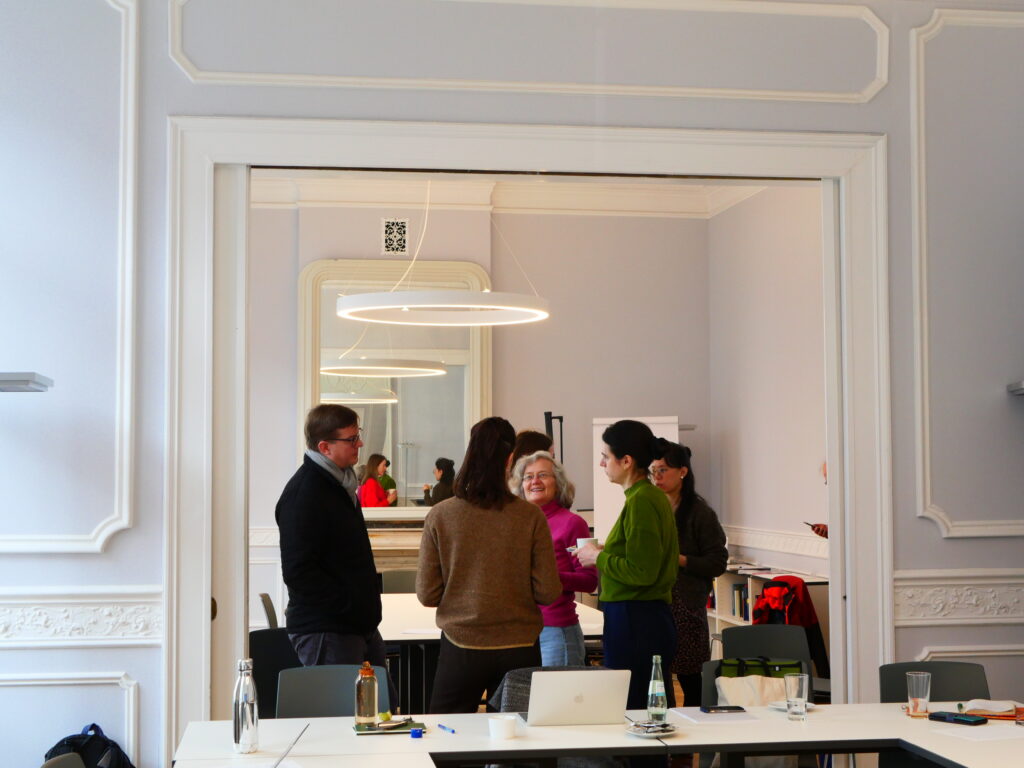
Photographer: Jule Janßen
On March 14th and 15th the workshop Turning points in reflections on science and technology: Toward historicizing STS took place at c:o/re. The aim of this event was to investigate the turning points in the intellectual history of Science and Technology Studies (STS) over the course of the 20th and 21st Centuries. Discussions converged to open up STS by historicizing this area of inquiry through explorations of the various turns in its development. As such, the meeting generated debates on the broad spectrum of notions of historicizing STS, as well of STS per se. It illustrated the interdisciplinary and multi-perspective study of STS that is being undertaken at c:o/re.
The event was organized in a carefully coordinated collaboration between c:o/re director Gabriele Gramelsberger and c:o/re research fellows. It served as a focused, c:o/re warm-up for the well-known STS Hub, which followed it, also hosted at RWTH Aachen University and organized by c:o/re director Stefan Böschen and other colleagues. The discussions benefitted from the attendance of Professor Ulrike Felt, who also delivered a keynote talk at the STS hub and is short term senior fellow at c:o/re during March 2023.
After Gabriele Gramelsberger, the main organizer of the Historicizing STS workshop, welcomed the participants to our Research Centre and explained the rationale of this meeting, c:o/re fellows Arianna Borrelli and Roland Wittje started off the academic debate. They chaired the panel Turning from History of Ideas and Artifacts to Practices and Society, with a focus on the increasingly close interplay between history of Science and Technology and STS, on the one hand and STS on the other, of which Lisa Onaga (Max Planck Institute for History of Science, Berlin) and Carsten Reinhardt (Bielefeld University) provided impressive examples.
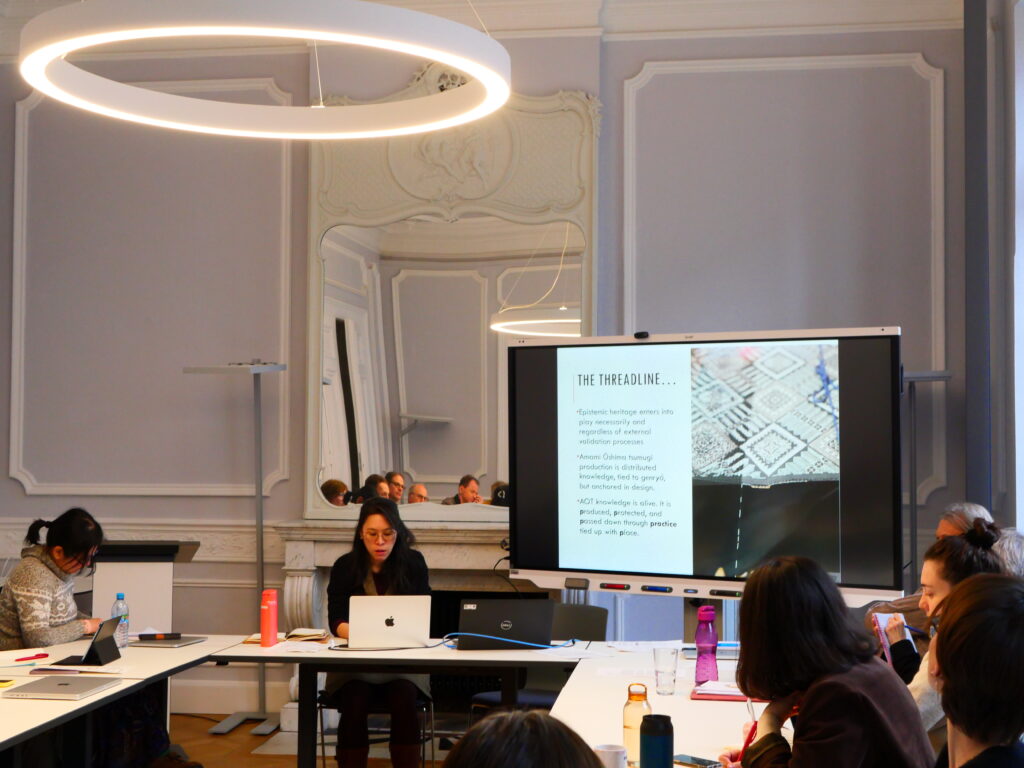
Photographer: Jule Janßen.
Lisa Onaga explored the practical turn in STS by focusing on silk craft. To recontextualize 20th Century Japanese modernisation and offer an example of how a community may reclaim its heritage, Onaga observed what she terms archipelagic thinking, that is, “seeing like an island”. Through this epistemic prism she explained how a remote community is aware of its being perceived peripheral while acknowledging itself as central to itself.
In his presentation, Residual Uncertainty in the Long Twentieth Century, Carsten Reinhardt addressed the Anthropocene through residue, as an analytical notion. This inquiry leads Reinhardt to a consideration of un/certainty, as a tension between striving for certainty and maintaining uncertainty. The debate pointed to the importance of reflecting on modernity through non-modern means.
As the second panel, c:ore fellows Benjamin Peters and Kyveli Mavrokordopoulou chaired Turning from Humans to Non-Humans, in a critical examination on anthropocentrism and its limits in the study of science and technology. Their invited speakers featured rising young scholars Salome Rodeck (Max Planck Institute for History of Science, Berlin) and Vanessa Bateman (Maastricht University).
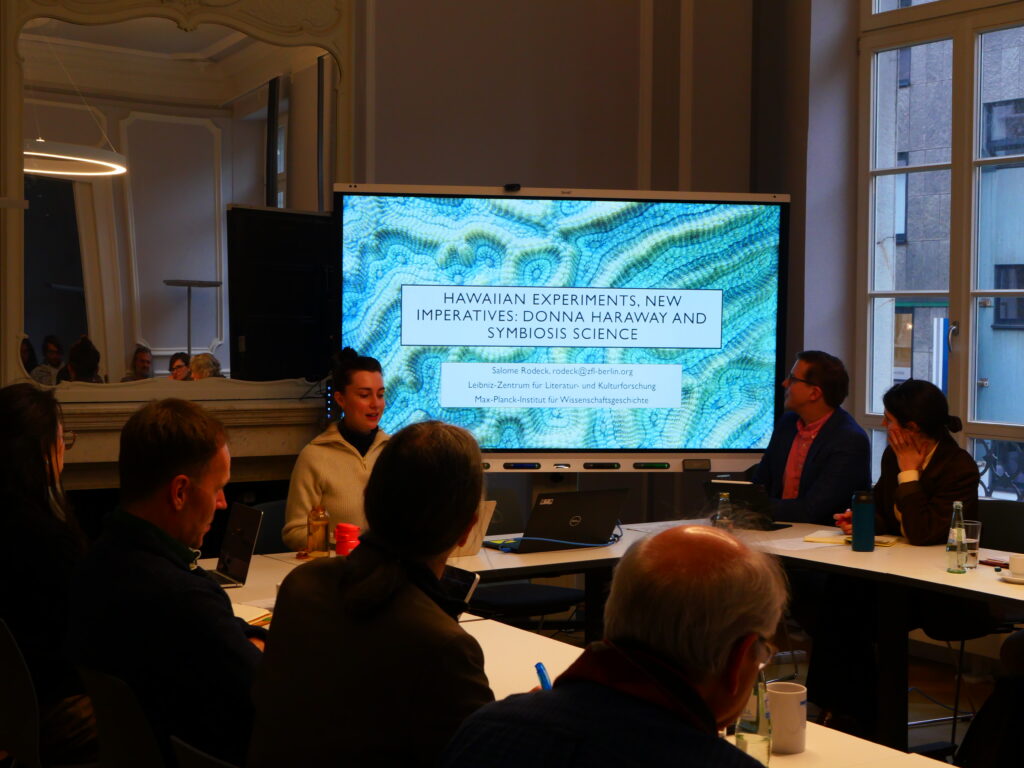
Photographer: Jule Janßen.
Salome Rodeck presented on Hawaiian experiments, new imperatives, referring to Donna Haraway and reflecting on symbiosis science. Drawing also on the pioneering work of Lynn Margulis and the political turbulence of the 1960s and 1970s, Rodeck advanced a historically informed argument that dislocates anthropocentrism in Haraway’s work, particularly around microbial organism cooperation.
Vanessa Bateman’s talk was titled Animal Histories: Moving Between/Across STS, Environmental History, and Visual Culture. She addressed the project Moving animals on the globalization of non-human animals. Particularly, Bateman reflected on how long-distance movements of non-domesticated animals were studied, represented, and managed in US national parks. Close consideration of how elk populations adapt to human infrastructures and semiotic-material objects, such as a human-made fence that is an obstruction in a species’ environment, suggests new territories for nonhuman STS.
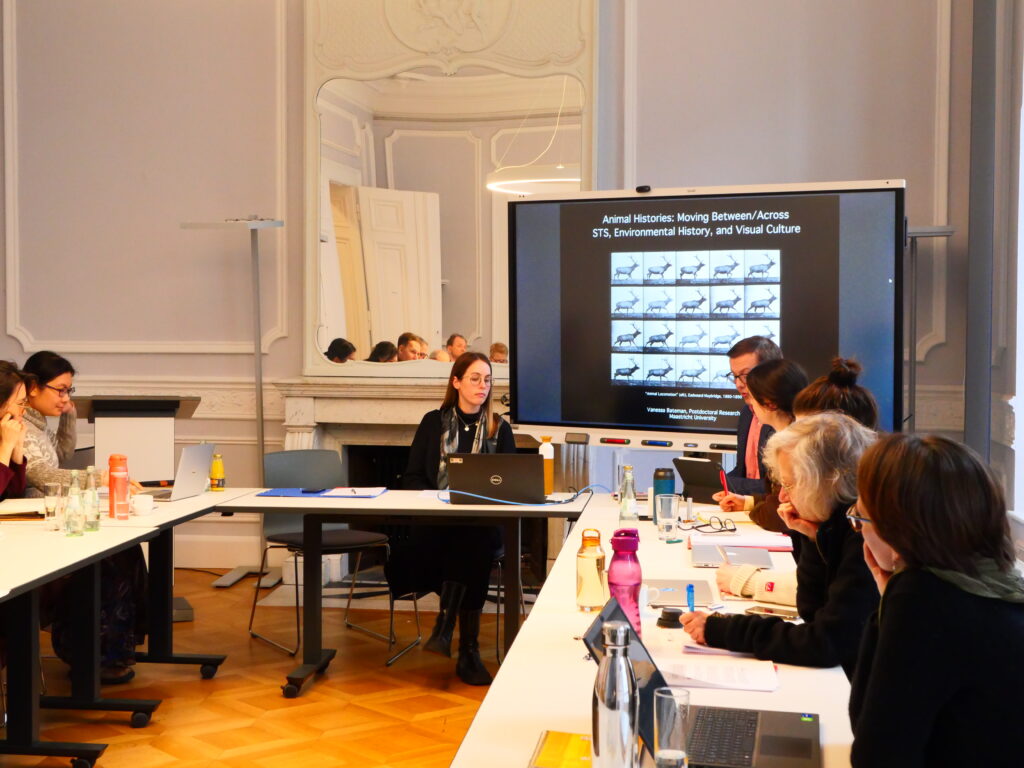
Photographer: Jule Janßen.
The third panel, “Turning points as epistemic shifts/epochal breaks”, was chaired by the c:o/re fellows Clarissa Ai Ling Lee and Jan C. Schmidt. In this panel, Andreas Kaminski (Darmstadt Technical University) asked whether ‘Hinge propositions’ are a way to identify epochal breaks? Following major epistemology scholars, from Thomas Kuhn to Friedemann Mattern, Kaminski pondered on how the world of observers changes once with the emergence of new ideas (or paradigms), through the deployment of Wittgenstein’s hinge propositions. Hinge propositions allow one to draw on the emergence of new expected, imagined and actual worlds. Hinge propositions could be used in the world-building of any world (including fictional worlds) so that the reader/audience/user/inhabitants of such world could take for granted that the rules governing such worlds are a priori determined and ‘historical,’ so that they could be ready to be deployed to emergent/new worlds. Therefore, hinge proposition is a fruitful instrument for conceptualizing turning points, shifts and epochal breaks.
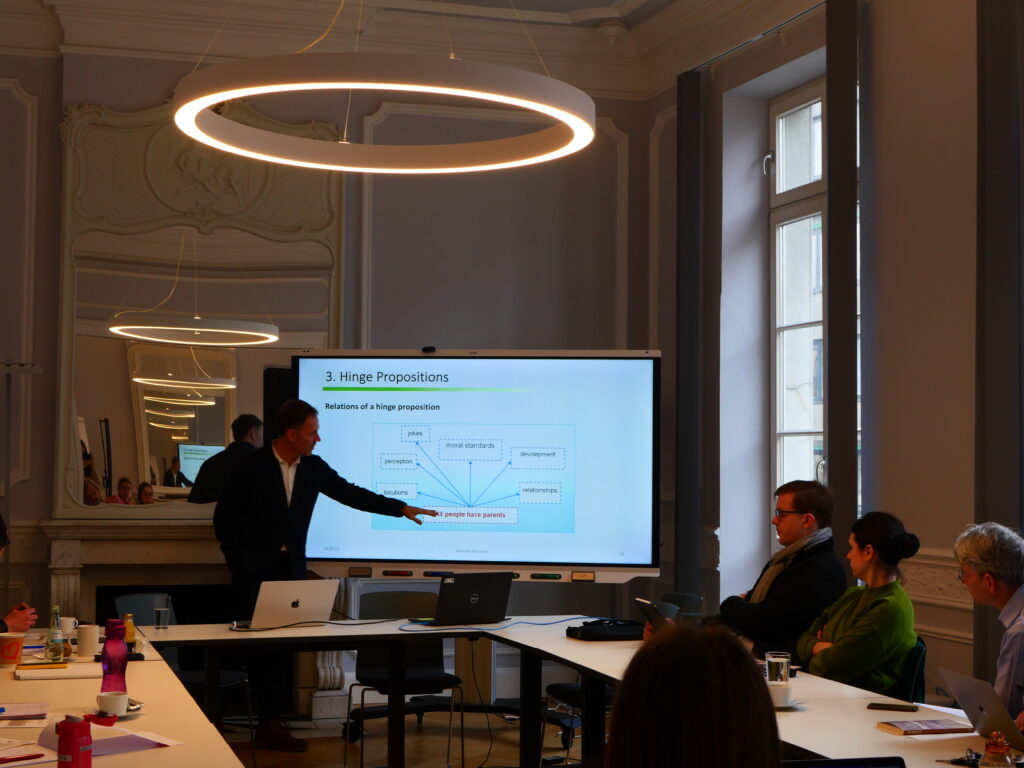
Clarissa Lee and Jan C. Schmidt wrapped up the discussions through a focused reflection on this third panel as well as on the workshop generally. In the closing, they call on the participants to reflect on what STS means by reminding them of the ‘messy’ genealogy that had made up the history of STS as a field and domain. Clarissa asked everyone to reflect on how topics, concepts and methods are co-opted into STS knowledge practices, and to consider the deliberations that had allowed new fields to be co-opted into a ballooning STS.
The c:o/re team is grateful to the participants and, of course, to the c:o/re fellows who made possible this interesting and insightful event.

Photographer: Jule Janßen
One Comment on “Historicizing STS @ c:o/re: Turning points in reflections on science and technology”
Leave a Reply
You must be logged in to post a comment.



Pingback: c:o/re Highlights of 2023: A look back